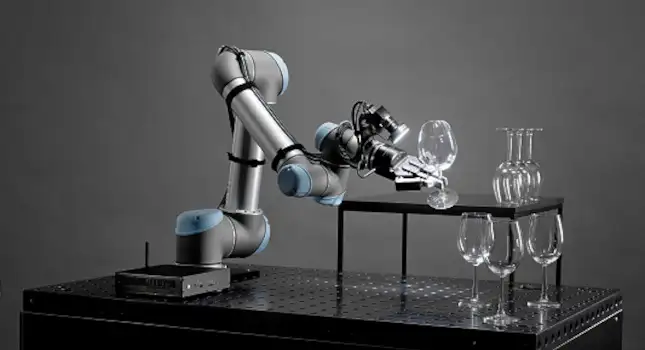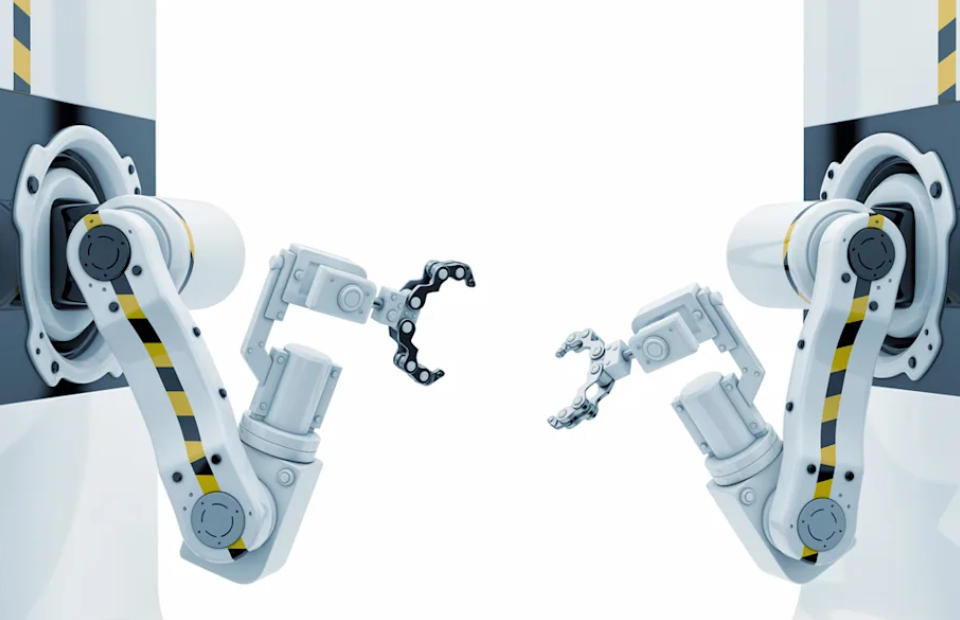
In the rapidly evolving world of goods movement, 2025 marks a crucial period for storage hub activities. With worldwide supply networks pressured to operate quicker, more correctly, and sustainably, smart robotics management technologies are reshaping storage spaces into clever, productive centers. These technologies, powered by cutting-edge learning algorithms, visual recognition, and instant information handling, are now essential instruments for contemporary storage operations. This article examines how such innovations are revolutionizing intelligent storage facilities, delivering exceptional productivity, and helping enterprises succeed in demanding markets.
The Shift in Storage Automation
From Fixed Machines to Smart Solutions
Early storage automation depended on pre-set equipment made for repeated jobs in stable settings. While useful for large-scale, consistent workflows, such arrangements lacked versatility, failing to manage the uncertainty and variation common in today’s facilities.
Advanced robotics control signifies a major advancement. Different from older versions, these arrangements combine artificial intelligence to permit flexibility, learning, and instant choices. By using pattern recognition methods and visual sensors, machines can recognize varied objects, improve processes, and adjust to changing operational conditions. This makes them vital for intelligent storage operations.
Why Intelligent Storage Matters Now
The need for speedier deliveries, better precision, and eco-friendly practices has intensified. Online retail leaders, logistics partners, and production firms confront growing client demands and worker deficits. Smart robotics control tackles these difficulties by refining workflows, lowering expenses, and improving adaptability. Industry figures for 2025 indicate that centers using cognitive machines report:
- Order selection productivity rising by 70%
- Fulfillment correctness nearing 99.5%
- Item movement periods dropping 30-40%
Key Uses of Smart Robotics Control
These technologies are transforming central storage functions, creating visible advantages across multiple domains. We now explore their primary implementations and the improvements they bring.
1. Accurate Item Selection and Packaging
Robotic limbs guided by smart systems, fitted with sophisticated sight tools, manage goods of different forms, dimensions, and surfaces with impressive exactness. Unlike older setups needing identical containers, these machines adapt to mixed stock, decreasing mistakes and merchandise harm.
Significant advantages include:
- Non-stop operation without performance drops
- Smooth connection with central management programs for live order updates
- Decreased breakage through careful handling
2. Live Stock Tracking
Manual stock inspections consume time and invite errors. Smart machines with vision capabilities conduct constant, undisturbed cycle counts. They identify variances and maintain accurate records without interrupting workflows.
Notable gains involve:
- Perpetual monitoring replacing manual checks
- Almost faultless inventory data preventing shortages or excess
- Uninterrupted operations as machines work beside human activities
3. Enhanced Internal Movement
Self-navigating transport units driven by smart systems travel through complicated storage spaces without fixed tracks. These devices optimize paths instantly, dodge blockages, and cooperate to reduce crowding, boosting total output.
Productivity improvements include:
- Shortened transit durations cutting material handling time by 40%
- Better area usage maximizing layout effectiveness
- Expandable teamwork with loading and dispatching procedures
Comparison Table: Conventional vs. Smart Robotics Control
| Function | Conventional Setups | Smart Robotics Control |
| Selection & Packaging | Restricted to identical goods, frequent mistakes | Handles diverse items, 99.5% precision |
| Stock Tracking | Manual, intensive labor checks | Live, undisturbed cycle counting |
| Internal Movement | Fixed routes, congestion issues | Instant path planning, blockage avoidance |
The Effect of Smart Robotics Control
Using these technologies creates transformative outcomes across storage sectors. Consider the figures and their meanings:
- Order selection productivity jumps 70% in centers using cognitive machines, enabling quicker fulfillment.
- Order precision reaches 99.5%, minimizing expensive returns and lifting client contentment.
- Material transit periods fall 30-40%, freeing assets for other duties.
- Workforce expenses decrease as machines handle routine jobs, letting people focus on quality checks and special cases.
These measurements explain why such technologies form the foundation of intelligent storage. They help businesses meet growing needs while controlling expenses.
Addressing Implementation Hurdles
While advantages are evident, adopting smart robotics control needs thoughtful preparation. Key obstacles and solutions include:
Seamless Integration
Seamless connection with current management programs and business systems is vital. Poor integration creates information gaps.
Approach:
Select partners offering strong connection tools and industry-standard compatibility.
Workforce Transition
As machines manage repeated tasks, human positions evolve toward monitoring and information study. This shift requires skill development.
Approach:
Launch education initiatives to ready workers for fresh responsibilities, building cooperative people-machine settings.
Data Security
Smart systems gather huge operational information, raising security worries.
Approach:
Apply strong digital protection and follow standards like data privacy rules.
Initial Investment
Initial expenses for smart machines may appear steep, but lasting savings in labor, output, and responsiveness yield solid returns.
Approach:
Consider subscription models to lower startup investment and grow progressively.
Wesar Intelligence: Pioneering Robotics Control
As a complete smart production solutions supplier, Wesar Intelligence Co., Ltd. leads in providing smart robotics control for intelligent storage. Specializing in eco-friendly logistics machines, management programs, and automated storage systems, Wesar delivers tailored answers including advisory, digital creation, equipment production, and ongoing assistance. With market-focused methods and a skilled team possessing deep sector knowledge, Wesar guarantees smooth integration and peak value for clients in fields like online sales, production, and merchandise.
Tomorrow’s Intelligent Storage
The merging of fast networks, connected devices, and local computing enables fully self-operating centers. Smart robotics control permits instant information examination, changing task importance, and automatic restocking. This creates a future where facilities function with little human involvement. Top logistics partners and online merchants already test these tools, modeling the 2030 storage center.
People-Machine Partnership: The Modern Norm

These technologies expand human abilities rather than replace workers. By managing repetitive duties, machines release people for strategic positions like information study and special case oversight. Firms investing in skill upgrading note better worker contentment and retention, solving labor gaps while building cooperative workplaces.
Final Thoughts
In 2025, smart robotics control isn’t just boosting storage productivity—it’s reimagining it. By allowing exact selection, live stock tracking, and improved internal movement, such systems empower businesses to satisfy rising client demands while cutting expenses and ecological effects. As the sector advances toward fully self-running centers, adopting smart solutions is now essential for competitiveness. With suppliers like Wesar Intelligence leading progress, enterprises can utilize these innovations to transform their activities and prosper in an uncertain environment.
Common Questions
What makes smart robotics control different from traditional automation?
Smart robotics control blends pattern recognition, visual understanding, and instant information handling. This lets machines complete tasks like picking, stock oversight, and material transfer with intelligence and flexibility.
How do these systems improve warehouse efficiency?
These arrangements boost output by raising selection precision to 99.5%, cutting item movement time by 30-40%, and permitting perpetual stock monitoring. This reduces errors and workflow interruptions.
Are these solutions cost-effective for small businesses?
Startup expenses might seem substantial, but durable savings in workforce, output volume, and adaptability provide good returns. Subscription approaches make adoption easier for varied enterprises.
How does this affect human workers?
These setups manage repeated work, enabling staff to concentrate on high-value duties like supervision, information interpretation, and special case management. This encourages cooperation.
What role does Wesar Intelligence play in this transformation?
Wesar Intelligence supplies tailored, complete solutions including smart machines, management programs, and automated storage. Expert guidance and ongoing assistance guarantee smooth connection and top performance.







